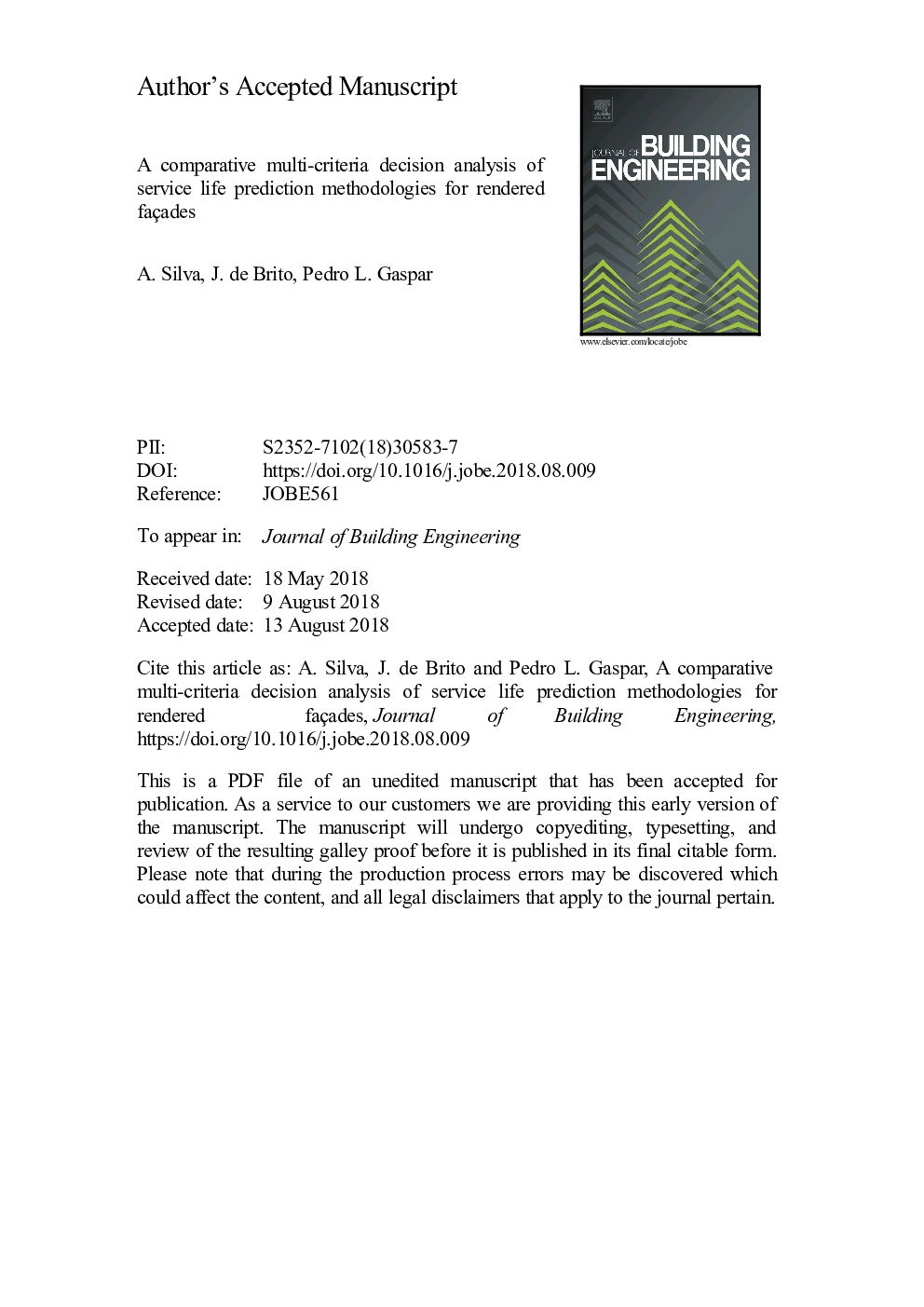| Article ID | Journal | Published Year | Pages | File Type |
|---|---|---|---|---|
| 11001091 | Journal of Building Engineering | 2018 | 36 Pages |
Abstract
The evaluation of the performance, service life and maintainability of the buildings' envelope is crucial to the accomplishment of more sustainable solutions. For that purpose, reliable methodologies should be defined to predict the service life of the buildings over time and according to their characteristics. In the last decades, several service life prediction methods have been established. This study intends to compare different service life prediction models applied to renderings, based on a multi-criteria decision analysis, in which two main criteria are analyzed: i) decision criteria, evaluating the features of each of the models proposed; and ii) the main goals of the stakeholders when applying a specific model, weighting the decision criteria according to their preferences. The analysis proposed comprises: the designer's perspective, who develops the model; and the user's point of view, who wants to use the model. In this study, a weighting and a sensitivity analysis of the criteria adopted are also proposed, providing stakeholder with information to select the most suitable model for a given use (e.g. a stakeholder without programming experience will tend to give more importance to the criterion “difficulty in learning the model”; whilst insurance companies may find stochastic models more adequate as they include uncertainty and risk). The results obtained in this study reveal that: simpler methods can be highly accurate but are only capable of analyzing the degradation phenomena in one dimension (relating the degradation condition of the rendered façades with their age); more complex models, are more demanding and more accurate, allowing encompassing the relevant variables for the explanation of the degradation of rendered façades; and stochastic models lead to the most relevant results, providing the risk of failure of the renderings according to their age and characteristics.
Related Topics
Physical Sciences and Engineering
Engineering
Civil and Structural Engineering
Authors
A. Silva, J. de Brito, Pedro L. Gaspar,
